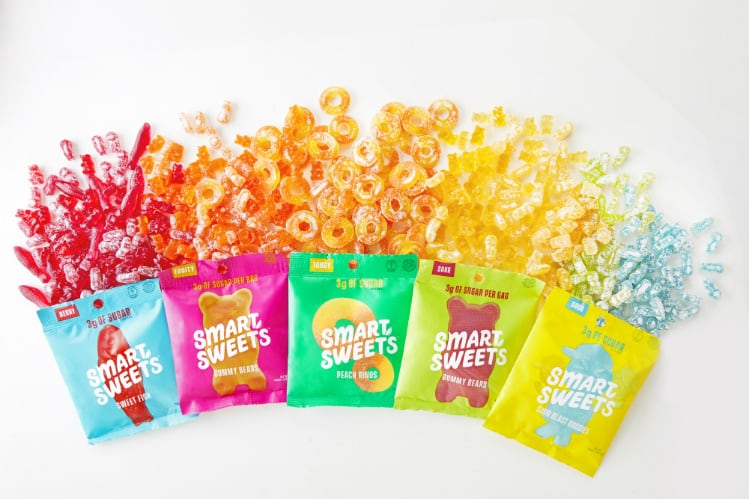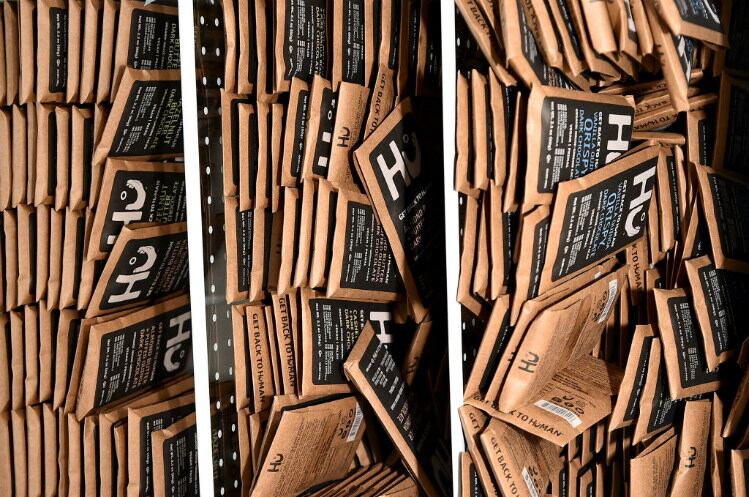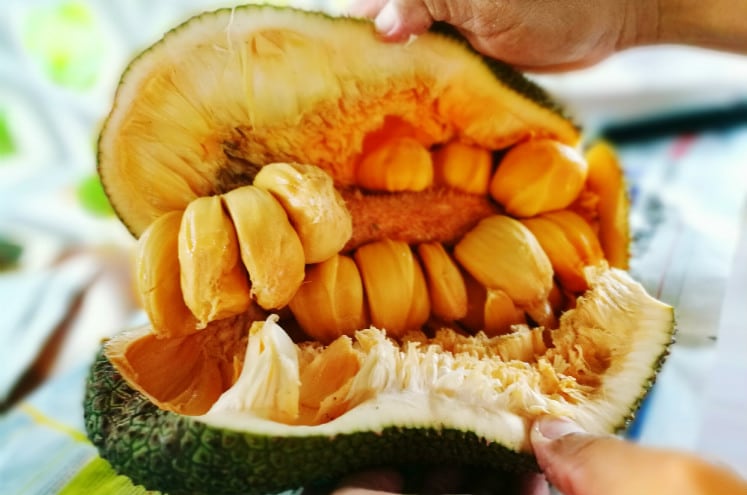Bosch started tinkering with gummy bears in her home kitchen in 2016, with a commercial mold she found on Amazon. Encouraged by her family, she honed a recipe for both fruity and sour, hitting shelves of a few hundred stores in Canada before snagging her ‘big break’ with Whole Foods in 2018.
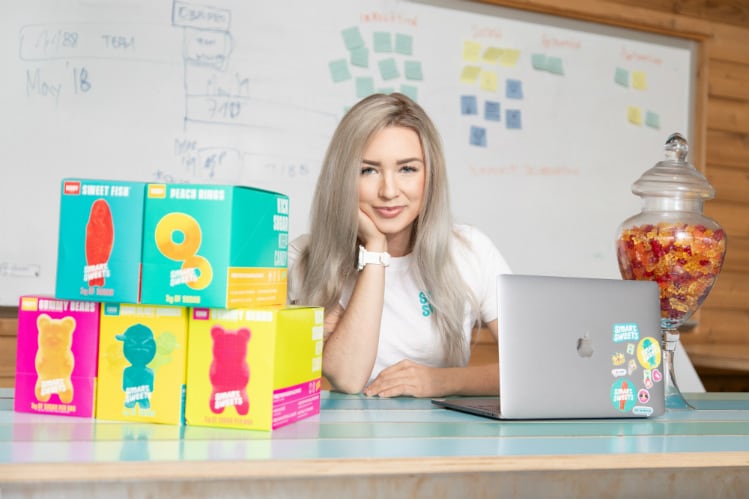
The line now features not just gummy bears, Swedish fish, peach rings, plus two sour varieties – with only 3g of sugar and 28g of fiber. The classic versions also provide 3g of protein.
ConfectioneryNews talked with Bosch about the origins of SmartSweets, the young company’s rapid evolution, and the trajectory of the functional gummy market.
It’s clear that sugar reduction is no longer a trend: it’s the norm. --SmartSweets founder Tara Bosch
*Editor's Note: This interview has been edited for length and clarity.
Q&A with SmartSweets founder Tara Bosch
ConfectioneryNews: You were only 21 when you created SmartSweets, spending time at a brand incubator and landing a few retailers in Canada just two years in. Whole Foods’ global candy buyer Jason Krolikowski reached out in 2018 after seeing you on television: Would you call that your big break?
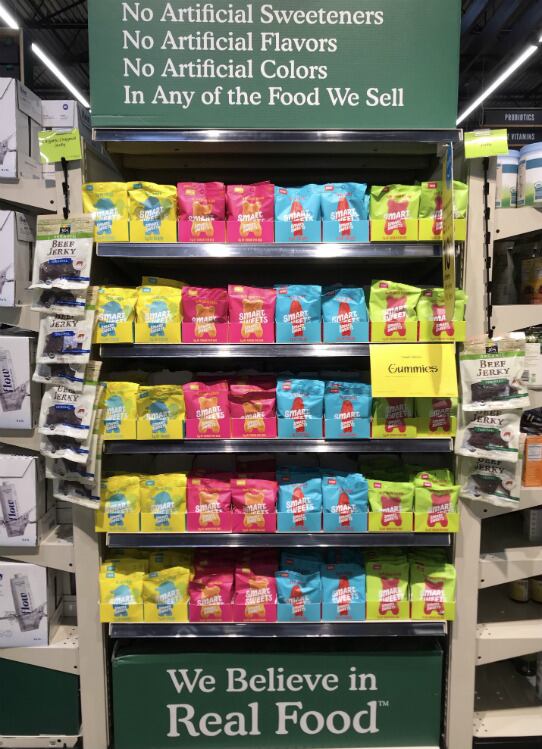
Tara Bosch: It was a big milestone. After Jason saw a Fox Business feature on SmartSweets, he emailed me about a global launch with Whole Foods Market. At first, I thought it was a spam email – it felt too good to be true! The next week, I was in Austin discussing a partnership with Whole Foods.
At the time, we were in less than 700 stores in Canada; less than a year later, we expanded into the US through Whole Foods. The chance Jason and Whole Foods took on the brand allowed us to create national access in the US overnight and serve our social media community, who were eagerly waiting to find us there. In 2019, we are now officially in 18,000 doors across the two countries.
CN: How would you describe your target demographic?
TB: We focus a lot on psychographics, as our ‘tribes’ often demonstrate; however, there is always a common thread between our target consumers’ attitudes and aspirations.
On the demographic side, we skew heavily female. For example, of our 262,000 Instagram ‘kick sugar’ community, 89% is women. She is time-starved and happy with who she is, but always focused on improving and making small adjustments to better herself and her family. She searches for health-conscious products without compromising on taste, and believes it’s possible to enjoy the foods she loves while treating her body right.
CN: How has consumer awareness of the low-sugar/high-fiber candy category grown over the years? Where do you see it going?
TB: It’s clear that sugar reduction is no longer a trend: It’s the norm. It mirrors multiple trends that are here to stay, especially with millennials and Gen Z, including natural snacking.
What we are seeing is that consumers’ growing demand for radically better choices is parallel with the demand for delicious taste and texture. As it should be! It has to deliver on the experience from the traditional sugar candy they know and love.
It’s what we’re so passionate about creating for consumers at SmartSweets. We trust it's possible to live in a world where candy doesn’t always equal sugar, and where words like guilt and permission no longer carry weight.
Another interesting thing we are seeing is that SmartSweets is bringing consumers back to the category: people who love candy, but who have largely cut it out of their diet due to the sugar content. We’re also seeing SmartSweets change purchasing behavior from a moderately enjoyed treat to a several-times-a-week snack. It will be interesting to see if, as low-sugar options accessibility grows, consumers’ consumption habits of candy continue to shift to enjoying it more as a snack.
CN: You originally called them Stevi-Sweets, before they ever hit the market. What changed?
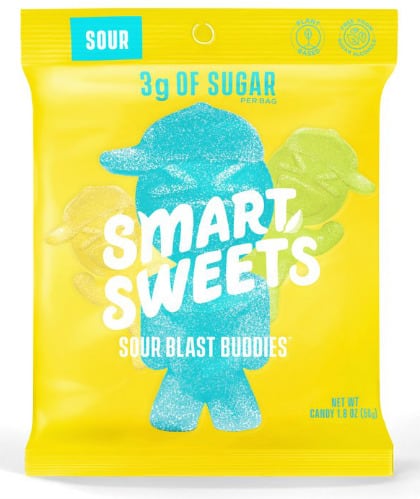
TB: Since day one of recipe testing in my kitchen armed with a gummy bear mold, our positioning has remained the same. Our original name, Stevi-Sweets, evolved right before our planned launch in 2016 – when our initial manufacturer backed out. The only other manufacturing partner willing to take a chance on us at the time had minimums that were too high. Being a young entrepreneur with limited credit history (I was 21 at the time), with my only asset a Honda Fit hatchback, additional debt financing wasn’t an option. I thought I was going to have to raise capital, so I began cold messaging investors on LinkedIn. Some were gracious enough to reply, but no one wanted to try a product called ‘Stevi-Sweets’ because of the negative connotation of stevia’s aftertaste. That feedback was a massive blessing, as it led to me evolving the company’s name to SmartSweets.
CN: Given the name, do you market them foremost as low-sugar, or are they high-fiber? Do you consider them sweets for all ages, for all occasions?
TB: ‘Kick Sugar and Keep Candy’ to us means innovating a radically better choice than traditional candy. We provide people with the candy they know and love – without the [calories of] sugar. Our primary value proposition is meaningful sugar reduction; we consider our plant-based fiber a secondary benefit for consumers.
CN: In developing the product, what was attractive about each of the ingredients – soluble fiber from tapioca, chicory root fiber, coconut oil? Did you intend to create a high-protein, high-fiber gummy, or was it all about cutting sugar – and the fiber content was an added benefit?
TB: Delivering the highest quality and best-tasting candy is what informs every ingredient choice. Low-sugar or not, taste is king! Our ingredient philosophy in developing our products is to be committed to relentlessly researching, testing, and choosing the most advanced, natural ingredients to create delicious candy you know and love while kicking as many grams of sugar per bag as possible. This informs all of our ingredient decisions, starting right from day one in my kitchen. The fiber content and protein both came as secondary benefits through ingredient choices that allowed us to achieve the primary value proposition for consumers: sugar reduction.
CN: So the same would be true for the product’s soy- and gluten-free characteristics?
TB: The initial goal was for every ingredient we use to be non-GMO, soy/gluten/dairy free, and allergen friendly. The philosophy was to create access so as many people as possible can enjoy SmartSweets!
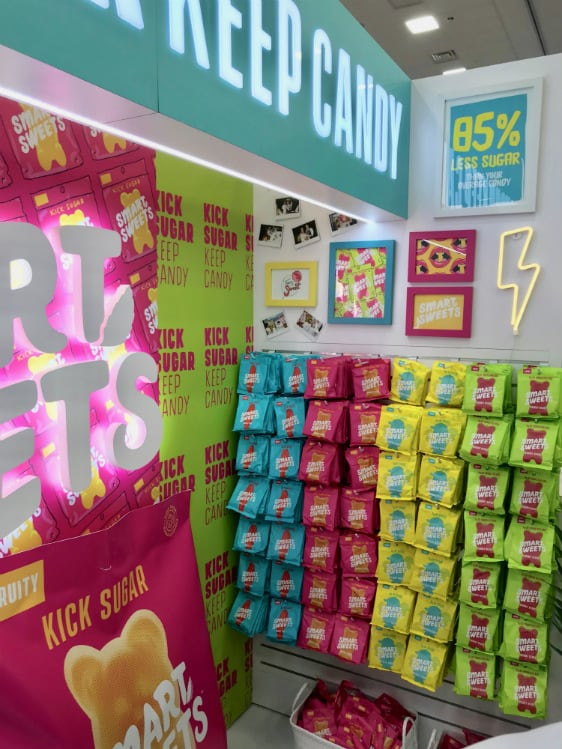
The company started with the classic gummy bear, made from prebiotic soluble tapioca fiber, gelatin and chicory root fiber with a touch of citric and malic acid, fruit and vegetable juice for color (plus some natural fruit flavor). The gummies get their texture from a combination of coconut oil and carnauba wax, and their sweetness from stevia leaf extract.
With only 3g of sugar per serving (equivalent to one bag), these gummy bears provide 100% of the daily recommended value of fiber – 28g. Some consumers have lamented that the high fiber content gives them ‘bubbly belly,’ which is why Bosch recommends a two-bag maximum in a single day.
A 6pk runs for $19.74 on SmartSweets’ website, or $39.48 for a 12pk. A single 1.8oz bag runs for about $2.99 at most retailers.
The brand’s Sour Blast Buddies and sour gummy bears also boast only 3g of sugar, but the recipe adds lactic acid, pectin, rice flour and carrageenan for texture. In June, SmartSweets introduced another classic gummy shape: the peach ring.
“The future of innovation in candyland looks like we’ll continue to recreate candy consumers know and love – without the sugar,” Bosch told us. “In 2020, we have several innovation launches planned that we can’t wait to share with our tribe, some of which will create new experiences for them beyond the gummy format.”

